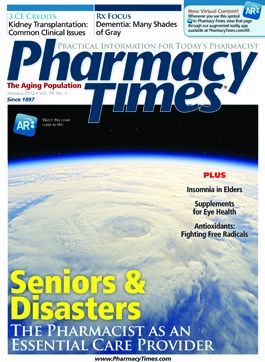Publication
Article
Pharmacy Times
Update on Abuse-Resistant Formulations
Author(s):
Should abuse-deterring features be required for approval of new opioids?

Should abuse-deterring features be required for approval of new opioids?
As I write this article, a lot is going on in the prescription opiate world, with the main topic being abuse-resistant formulations. In looking at the pros and cons, the only real true data that I know of revolve around Purdue Pharma’s OxyContin, an extended-release oxycodone product that pharmacists are very familiar with in the marketplace.
In August 2010, a new formulation of the drug was introduced. On the surface, the pill doesn’t look any different from the old one except for the indicia change from “OC” to “OP”—and perhaps the slightly larger 80-mg dose. The colors and strengths are identical and the same oxycodone is present inside the pill. The reformulation isn’t remarkable on the outside, but on the inside is new technology that greatly reduces the ability of a person to compromise the new OxyContin.
The work that Purdue did with this drug is one of the main reasons that the discussion of abuse-resistant formulations for future opiates is important. Although I have no lengthy study to quote, I have something that is perhaps more important, and that is the street value of the new OxyContin and the overwhelming experience of this nation’s law enforcement agencies dealings with the new drug.
The bottom line is that the reformulation of OxyContin is working. I know this for several reasons—I run a large drug task force in southwest Ohio whose main work is buying drugs from traffickers and I have traveled extensively around America asking law enforcement what their experiences have been with the reformulation. Couple this with RADARS data of the survey of drug diversion units in the United States and you find that street prices for OxyContin have certainly dropped since the change.
In the case of my own task force, our street-selling folks have found it to be not nearly as desirable as 30-mg oxycodone IR tablets or cheap heroin.
Lately I have heard a low rumble from people who think that the reformulation has been a failure. I am not sure where they get their information, but mine comes from real life and the law enforcement agencies that deal with licit and illicit drug sales and use on a daily basis. I don’t know if they represent a group of “Purdue haters,” which certainly exist, or well-meaning individuals who honestly think the project didn’t work.
Canada approved the production of generic old formulation OxyContin, and United States law enforcement immediately began gearing up for possible extensive border smuggling of the new drug. I don’t know if this will happen or not, as Canada did not approve the new formulation of OxyContin for some time after America’s hit the market in August 2010, and we did not see the huge influx that was predicted. However, if our own FDA approves a generic in a couple of years and does not require an abuse-resistant formulation, there is no question in my mind that the level of abuse will return.
There is much debate as to whether abuse-resistant formulations should be mandated on new opiates. The main downside that I can see is, of course, price. These pharmaceuticals will have undergone years of testing and expensive development, and when the branded drug is approved for dispensing, it will certainly be more expensive than generics. Drug makers are even working on making immediate-release opiates with an abuse-resistant component, something I find very interesting.
My thought is even though the abuse-resistant opiates will be more expensive for insurers, continued success of the OxyContin reformulation tells me that these formulations will reduce the typical direct and collaborative damage that other CII opiates have caused in the past. Of course, attempting to assess exact numbers is impossible, but there is no doubt there will be a savings in money and lives, and that the percentage of legitimate patients consuming these medications overall will increase. Drugseekers, whether addicts or recreational, will have a reduced demand for the tamper-resistant drugs.
However, I am not naive enough to think that these reformulations will cure the addiction problem in America. Certainly not, as the heroin epidemic rages on in our country and seemingly increased with the reformulation of OxyContin. Addicts will change to immediate-releasing oxycodone, heroin, or other opiates that do not have the barriers that abuse-resistant pharmaceuticals possess.
The big value I see in all of this is likely better care for legitimate patients needing prescription opiates. It will lessen the stampede of drug-seekers to legitimate pain clinics and pharmacies, allowing chronic pain and cancer patients to be better treated instead of sometimes being denied medication they desperately need. In the end, isn’t this the number 1 ultimate goal for all of us in this field?
We all need to support abuse-resistant formulations of prescription opiates, and there are several in the pipeline of pharmaceutical companies in our country. It makes sense to me that these drugs, although initially expensive, will pay for themselves in a number of ways down the road.
Cmdr Burke is commander of the Warren County, Ohio, drug task force and retired commander of the Cincinnati Police Pharmaceutical Diversion Squad.







